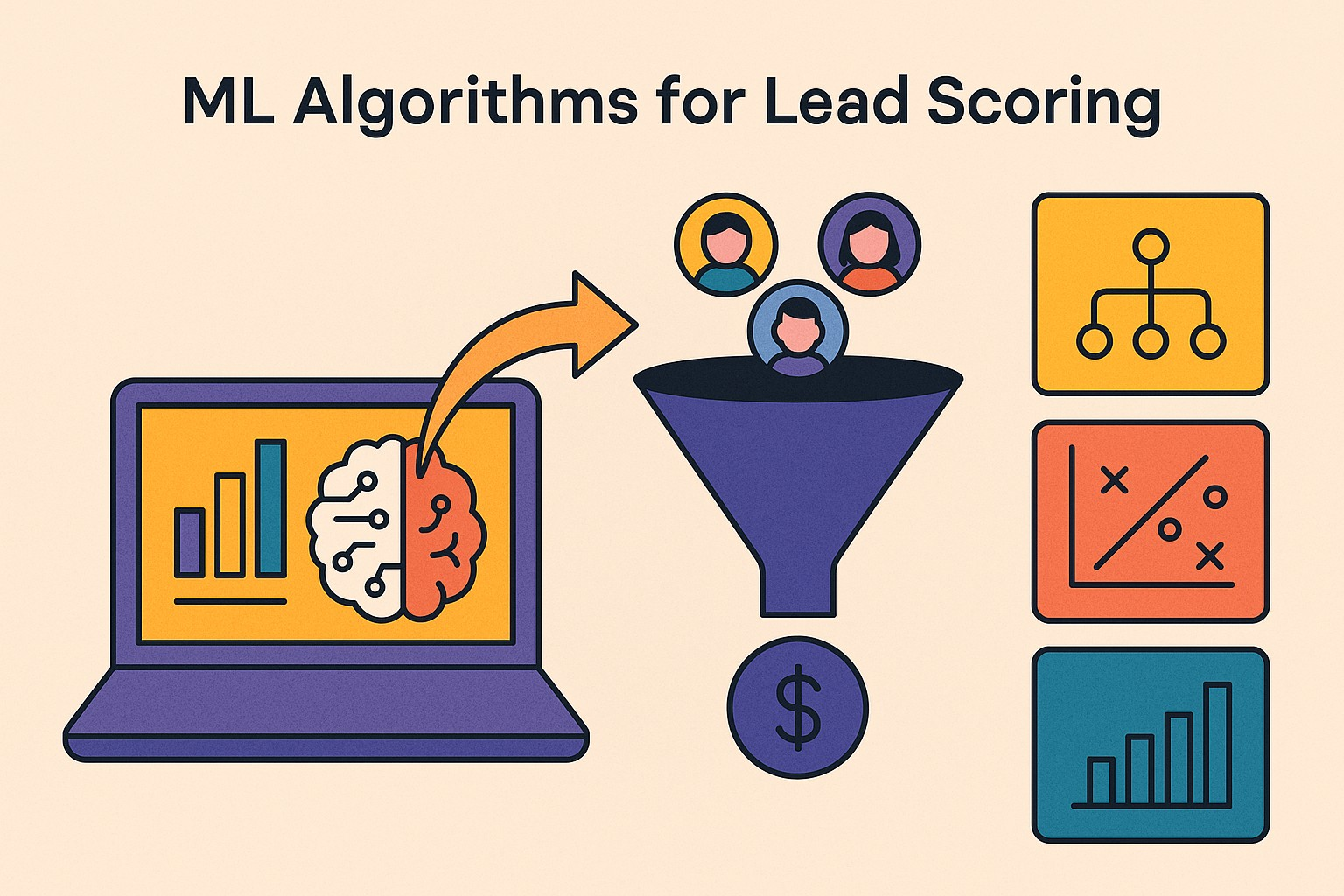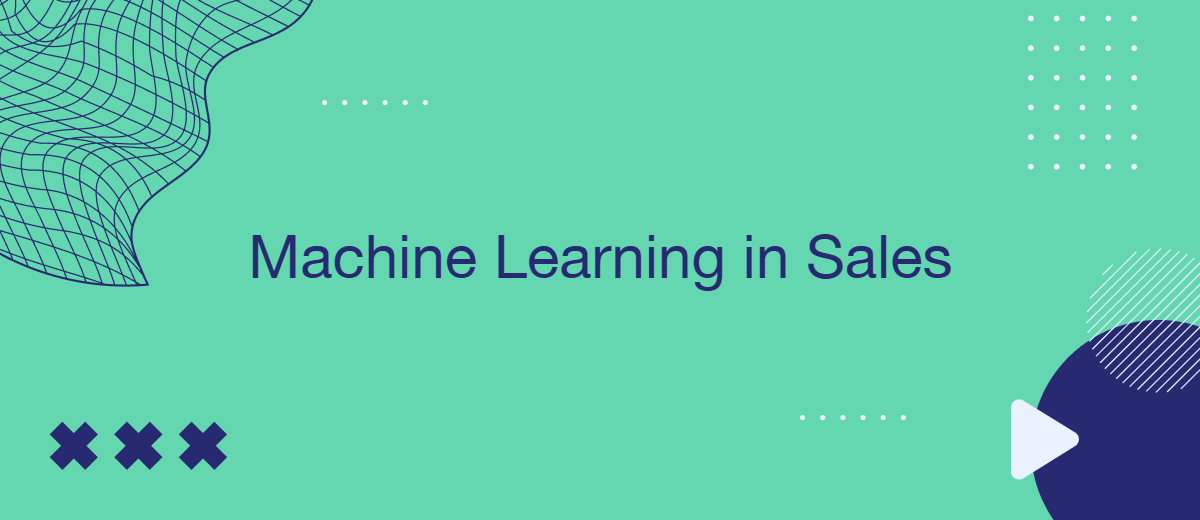Machine learning technologies have proven themselves in many areas, including sales, where they are actively used to automate lead scoring, forecasting, and other key operations. After reading our article, you will learn how ML algorithms help businesses increase sales, what solutions and application scenarios are relevant for them, and what challenges companies face when implementing machine learning in sales and marketing.
How Machine Learning Transforms Lead Scoring
In the first section of the article, we will discuss the problems inherent in classical lead scoring methods, the benefits of using ML models in this area, and the algorithms most often used for AI-powered lead scoring.
Typical Problems with Traditional Lead Scoring
Classic lead evaluation methods are characterized by numerous challenges that can significantly reduce their effectiveness. The most serious of these are:
- Quality and quantity of data. Traditional lead scoring formats do not always have sufficient data to build and configure an assessment model. Using incomplete, irrelevant or outdated data significantly limits the effectiveness of lead assessment processes.
- Selecting criteria. The next key issue is selecting relevant criteria for lead scoring and ranking them by importance. This task requires marketers to do serious work analyzing demographic and behavioral factors, as well as explicit and implicit signals.
- Lead qualification and transfer. An equally important challenge for classic lead scoring is the timely qualification of leads and data transfer to sales managers. They need to create clear rules and define thresholds for when a lead becomes a marketing qualified lead (MQL) or a sales qualified lead (SQL). They should also regularly monitor and measure the effectiveness of lead scoring based on several metrics: conversions, revenue, etc.
- Lead nurturing and retention. Maintaining and increasing lead engagement and loyalty throughout the customer journey is another major challenge facing modern marketers. To overcome this, they need to create and implement a comprehensive lead nurturing strategy across multiple channels, as well as employ timely segmentation and behavior-based lead scoring.
Advantages of ML Models for Lead Scoring
AI lead scoring technologies allow successfully coping with the described problems and qualitatively optimizing evaluation processes. Among the key advantages of ML models used in this area are:
- Increased accuracy. Machine learning models not only analyze historical data, but also collect new information from various sources in real time. Their evaluation criteria consider a wider range of factors and quickly adapt to dynamic conditions, which significantly increases the accuracy of the result.
- Improved productivity. Using ML models for lead scoring helps automate the processes relevant to it: from data analysis and selection of evaluation criteria to qualification and lead nurturing. This significantly accelerates the achievement of results, improving employee productivity by reducing the amount of manual labor.
- Accelerated synchronization and adaptability. Thanks to the support of artificial intelligence, it is possible to eliminate inconsistencies in the work of sales and marketing departments. ML algorithms effectively organize data and coordinate access to it, which minimizes the risk of errors and stimulates cooperation.
- Increased sales and revenue growth. Active use of lead scoring machine learning helps businesses identify the most promising leads faster and more accurately, as well as optimize their passage through the sales funnel. This makes it possible to successfully implement more transactions and thereby increase the company's profitability.
Which ML Algorithms are Most in Demand for Lead Scoring

When performing lead scoring tasks, various ML algorithms are used.
Random Forest
A common machine learning algorithm used for classification and regression is the creation of multiple decision trees. For classification problems, the output is the class chosen by the majority of the trees. For regression issues, the output is the average of the trees' predictions.
Logistic Regression
Logistic regression is another well-known ML algorithm that is used to predict the probability of a certain outcome, event, or observation through binary classification. The output generated by the model is limited to two possible values: yes/no, true/false, 0/1. The method analyzes the relationship between one or more variables, classifying the data into discrete classes.
Gradient Boosting
Finally, the third type of ML algorithm, gradient boosting, is no less widely used for lead evaluation. It allows combining the capabilities of several predictive models by training them sequentially. By comparing the results, they generate with the actual values, the algorithm determines the error rate of the models. Based on this data, it calculates a gradient that helps adjust the parameters of the models in the next round of training.
Enhancing Sales Forecasting with Machine Learning
Artificial intelligence technologies also bring considerable benefits in the field of sales forecasting. In this section of the article, you will learn about the limitations of traditional forecasting methods, the advantages that ML models provide to marketers, and the algorithms most often used to automate forecasting.
Limitations of Traditional Sales Forecasting Methods
Marketers regularly encounter problems when using classic predictive analytics:
- Result bias. If companies rely solely on subjective data to make forecasts, this can significantly reduce the objectivity of the result. Quite often, such forecasts are based on biased opinions (for example, customer reviews), which can distort the overall picture.
- Data demanding. Poor data quality can negatively impact forecasting accuracy, so data typically needs to be cleaned before use. Depending on the type and volume of data (and the goals and objectives of the forecasting campaign), cleaning the data can be a labor-intensive process that requires significant time and other resources.
- Resource consumption. When preparing large datasets for large-scale campaigns (especially those using quantitative methods) for sales forecasting, the corresponding resources will be needed. Companies have to create entire departments of predictive analytics, whose employees are exclusively engaged in collecting, processing and analyzing data to create forecasts.
- False optimism. In the forecasting process, marketers and analysts often make overly optimistic forecasts that distort the real situation in the sales area. To correct the situation, it would be a good idea to add data sources to the report (for example, sales statistics for the previous year, etc.)
Advantages of Sales Forecasting with Machine Learning
Now let's look at the main benefits that the implementation of artificial intelligence can bring:
- AI can quickly and efficiently analyze huge amounts of data from multiple sources, identifying important trends and patterns that even experienced specialists might miss. This significantly increases the accuracy of the forecasts they generate.
- ML algorithms constantly self-learn, improving the quality of the results they produce with each iteration. They also quickly master new data, optimizing their potential.
- Machine learning models effectively remove the bias and inconsistency that are common in traditional forecasting methods. Their standardized approach enables them to create highly accurate forecasts based on up-to-date data.
- AI-powered forecasting considers not only historical data but also real-time dynamic market changes. This makes it possible to adjust forecasts accordingly, making them more relevant and realistic.
Popular ML Solutions for Sales Forecasting Automation
Let's take a closer look at which ML solutions are used to automate predictive analytics processes.
- Automate the work with leads from the Facebook advertising account
- Empower with integrations and instant transfer of leads
- Don't spend money on developers or integrators
- Save time by automating routine tasks
Time-Series Analysis
Time series forecasting is a universal analytical method based on building models using historical analysis, followed by conducting research and making strategic decisions based on them. When implementing this method, specialists collect statistical data and perform modeling using ML models to make forecasts and prepare insights.
Neural Networks
One of the basic and most common methods of sales forecasting using machine learning are neural networks trained on relevant historical data. Neural networks can consider complex and nonlinear relationships between input and output variables. During the training process, they analyze vast arrays of diverse data with many types and characteristics, and also adapt to changing environments by updating their parameters.
Reinforcement Learning
Reinforcement learning is an advanced machine learning technique in which a model or agent analyzes data and makes predictions, actively interacting with the environment to improve the accuracy of the result. The technique helps optimize decision-making by rendering the learning process more dynamic and adaptive.
Practical Use Cases of ML in Sales Automation
Next, we will consider the most relevant scenarios for the application of machine learning algorithms in sales forecasting and automation of customer interaction processes:
- Personalized recommendations. Specially trained ML algorithms can analyze customer behavior and their purchase/viewing history. Based on this data, they make individual product recommendations that match the preferences of a specific customer.
- Automatic lead generation and scoring. Machine learning models demonstrate high efficiency in automating the tasks of identifying potential clients, collecting their contacts, and scoring leads based on their warming level.
- Marketing automation. AI-based systems help marketers flexibly automate the planning, preparation, and analysis of marketing campaign results. At the same time, they process a wide range of data and also qualitatively personalize content for different audience segments and promotion channels.
- Sales monitoring and optimization. One of the key scenarios for using machine learning in sales is real-time monitoring of sales indicators. ML algorithms track even the slightest changes in market dynamics, compare this information with historical data and forecasts, and then generate relevant recommendations for optimizing sales strategies.
- Customer segmentation. Artificial intelligence technologies automatically collect and analyze a wealth of customer information, including demographics, purchase history, and all interactions with the company. Based on this data, they create a detailed buyer profile and accurately distribute them into target segments, which helps improve sales performance.
Key Challenges in Implementing ML Solutions for Sales
Implementing machine learning for sales has not only advantages, but also some limitations, which we will discuss in the final section of our article.
Data Quality and Availability
Ensuring the necessary volume of high-quality data is one of the most common challenges businesses face when implementing AI. Insufficient completeness, low relevance, or unreliability of information can significantly reduce the accuracy and performance of ML models during their training or operation. To overcome this challenge, companies should invest sufficient resources in data preparation, including data collection, cleaning, and analysis.
Integration with CRM and Other Business Systems
A significant number of companies implementing AI in sales struggle with integrating machine learning models with their existing workflows and systems. The challenge lies in integrating ML algorithms efficiently and securely without disrupting existing infrastructure and/or processes. To achieve this, businesses must comprehensively analyze their systems, assess their compatibility, and develop a phased integration strategy.
Recruitment and Training of Staff
Large-scale implementation of machine learning sales requires businesses not only to effectively manage data and competently integrate algorithms into their software stack, but also to select qualified personnel to work with new technologies. The demand for experienced AI/ML specialists currently significantly exceeds the supply on the market. Therefore, companies implementing these solutions have to spend a lot of time searching for the necessary specialists or invest resources in training their employees.
Bottom Line
The use of machine learning models for sales forecasting, lead scoring and automation of other stages of sales offers great prospects for modern companies. Enterprises can significantly improve the accuracy and productivity of work processes, make them more adaptive, and improve the synchronization of sales and marketing departments. ML algorithms in demand in the sales sector have many application scenarios — from personalized recommendations to real-time sales analysis and lead assessment.
Also read on our blog:
- Google Lead Form and Smartsheet Integration: Automatic Addition of Rows
- Perplexity AI: The AI-Powered Search Engine Revolutionizing Information Access
- Speed Up Your Sales: How SMS Automation Gets Leads to Buy Faster
- Google Sheets vs Airtable: The Ultimate Spreadsheet Face-off
- How to Integrate TikTok and Notion: Step-by-Step Guide

